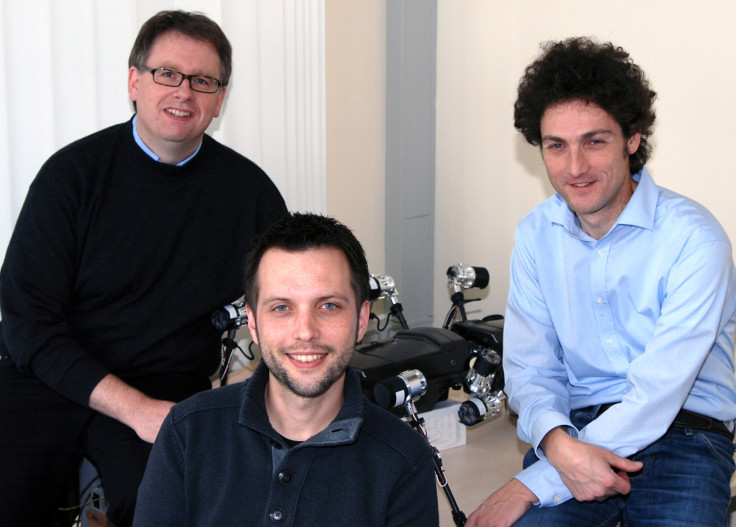Robot designed as stick insect takes first steps as it learns to walk

A biomechatronics research team at Bielefeld University have succeeded in teaching Hector, a robot stick insect, the only one of its kind in the world, how to walk.
Hector has 18 elastic joint drives but elasticity alone was not enough for Hector to walk through a natural environment containing obstacles.
A control system that coordinated the movements and established connections between all sub-systems was developed and tested first on computer.
"The way that the elasticity in Hector's drives act is comparable to the way that muscles act in biological systems," says Professor Dr Axel Schneider, who heads the Biomechatronics research group.
The work comes after years of research on intelligent motion control in insects and robots. It involved evaluating motion sequences in stick insects in order to understand the control mechanisms in the insect's nervous system and transfer these to computer models.
The design and manufacture of the robot body was the other aspect.
'All sub-systems have to communicate with each other for the robot to walk without any difficulties,' says Jan Paskarbeit, who developed and built the robot. 'Otherwise, for example, Hector might have too many legs in the air at one time, become unstable, and fall over. Moreover, the legs have to be able to react to collisions with obstacles. We have dealt with this by implementing a reflex behaviour for climbing over objects.'
Inspired by the insect, Hector has passive elastic joints and an ultralight exoskeleton. Throw in a large number of sensors and the robot functions according to a biologically inspired decentralised reactive control concept called the Walknet.
By 2017, the walking robot will be equipped with additional abilities thanks to a major project at the Cluster of Excellence Cognitive Interaction Technology (CITEC).
Eight research groups with scientists drawn from biology, physics, computer science and engineering, have joined together for three years in a large-scale project to optimise Hector.
They are now working on equipping Hector's front section with far-range sensors as in a head.
Hector serves as a platform for biologists and roboticists to study animal locomotion.
© Copyright IBTimes 2025. All rights reserved.





















